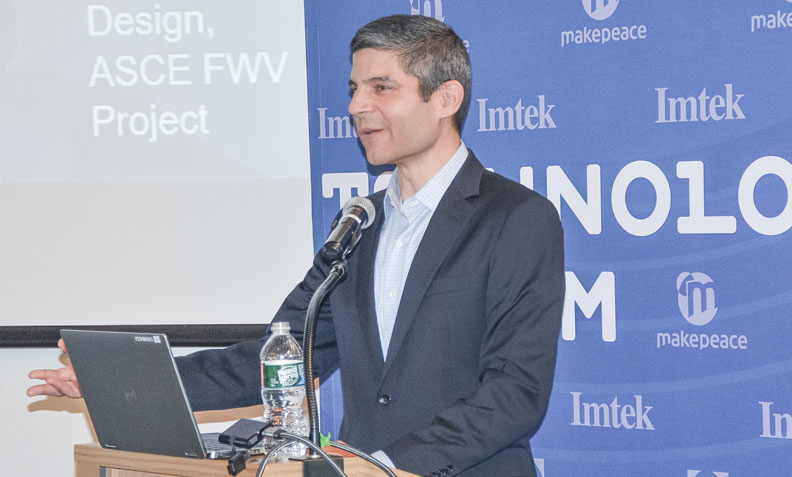 David Odeh - Odeh Engineers.
David Odeh - Odeh Engineers.
The start of the decade provides an opportunity to both take a step back and evaluate the past ten years’ innovation and to look forward and envision how present-day changes are propelling us into a new era of “smart building.”
This past November, the Archimedia Solutions Group, the parent group of Makepeace and Imtek, hosted their first “Technology Forum: Innovation’s Impact on the Building Industry,” an event featuring speakers and discussion panels sharing how technologies like laser scanning, BIM, VR, and AI impact the industry. The event’s speakers and panel demonstrated how firms have and continue to utilize disruptive innovation to stay ahead in a rapidly evolving field.
3D Laser Scanning
3D scanning and software equipment facilitates project team communication and conflict prevention to improve workflow as the AEC industry continues to embrace technological advancements. The SYNNEX Corporation’s Keith Cox and Leica Geosystem’s Manny Lujan demonstrated the Leica 3D scanner’s portability and reality capture technology by documenting the event space in real-time.
Leica’s 3D scanning technology provides precision measurements and documentation, notably improving inspection and quality assurance efforts for as-built, verification, and close-out. Makepeace allows businesses to both rent and purchase Leica 3D scanning and software equipment in addition to providing on-site technician services for firms without the time or personnel to scan themselves.
VR
Odeh Engineers principal David J. Odeh opened the forum discussing how technology provides an opportunity for collaboration between engineers and architects, and how it can serve as a visualization aid to deliver real-time renderings to key stakeholders and constituents. The firm is currently constructing an “immersion room” in their new office featuring a VR den designed to facilitate collaboration between project team members - slated to open during Spring 2020.
AI
Smartvid.io’s John MacVarish delivered a talk outlining the analytical learning’s applications within the design/build industry. Among AI’s many capabilities, image recognition and deep learning impact the future of the “smart jobsite;” on-the-job AI tech identifies people and mobile equipment and can be applied to project dashboards, contributing to predictive risk management efforts and improving jobsite safety and efficiency.
AI relies on continued data collection and information gathering. Smartvid.io embraces and improves predictive-based safety AI capabilities within the AEC industry with the Predictive Analytics Strategic Council, formed in partnership with AEC firms committed to sharing data to help advance predictive risk efforts in the industry.
BIM
The event’s discussion panel featured a number of virtual design and construction professionals. They also provided a brief overview of the ongoing training and staff development both internally and to subcontractors that accompanies adoption of new tech; as BIM becomes standard practice on projects of varying scales, individuals working on all levels of a given project must be able to effectively understand the technology.
Although BIM has been around for some time, the technology’s diverse uses have transformed the industry’s collaborative nature, allowing project team members to stay up-to-date throughout the entire project lifecycle in a way that physical technical drawings cannot. BIM serves as an essential component of the future of smart building technology, providing competitive advantages to firms who adopt it with increased project acquisition, improved budget and project management, and increased safety.
(Article originally published in High Profile Magazine by Sara Mannes.)
